Blue chips' bullish earnings outlook
The February 2021 ASX reporting season was the first comprehensive assessment of the health of corporate Australia since the onset of the pandemic. Marcus Bogdan from Blackmore Capital, which provides the "ASX blue-chip" portfolio allocation for many of Lucerne’s investors, talked through the key trends to emerge from this pivotal juncture in markets.
The overall message was very positive, with upgrades their best in over two decades and Marcus bullish on the earnings growth outlook, while cautioning for the need to be selective given market multiples.
We asked Marcus the following questions:
- why have you been adding banks after avoiding them for several years?
- why do you believe value stocks still have much further to go?
- what is your take on CSL Limited (ASX: CSL) - a core position for some time - along with another healthcare name in your portfolio.
Some of the highlights from the discussion are summarised below.
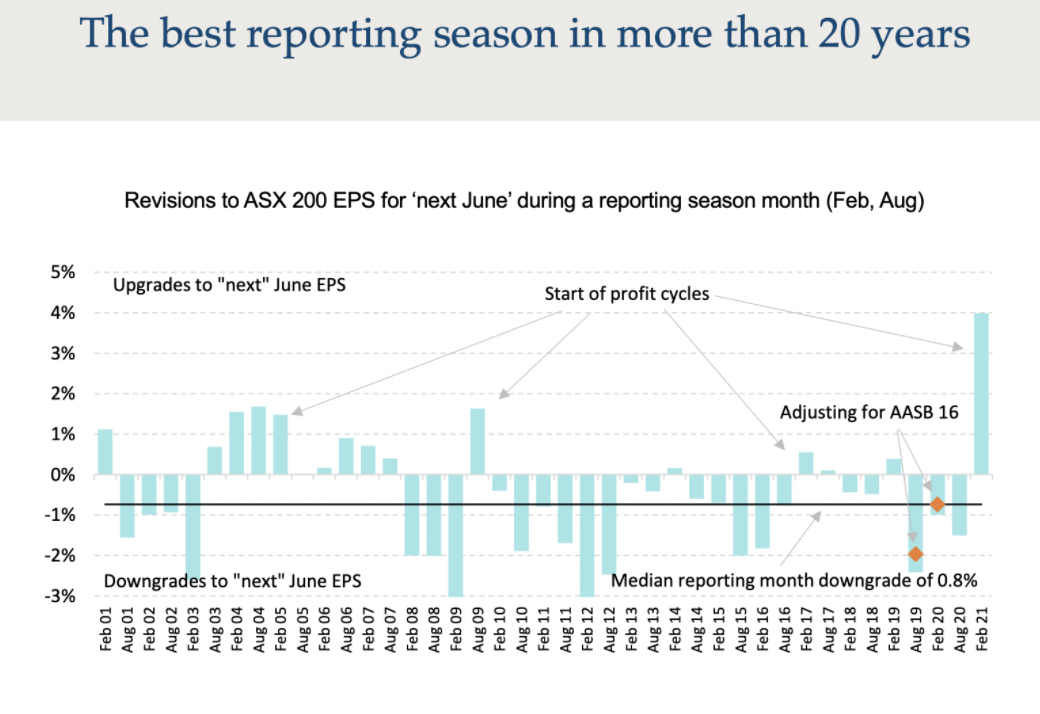
Q: Marcus, following reporting season, how appropriately do you think the market is valued?
Looking at the 12 months forward PE for the Australian equity market, we're currently around 20 times, which is well above the long-term average of 14.5 times, and very much similar to the levels in 2000. So, we have to be somewhat cautious.
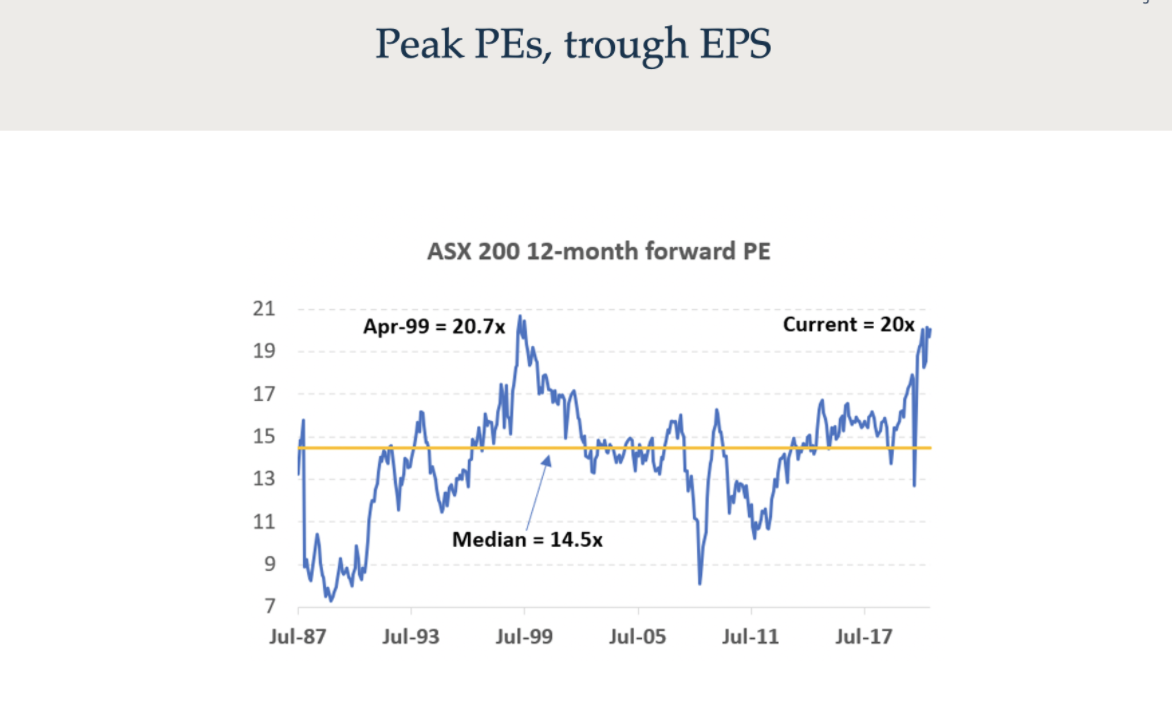
I think that we've had the big ‘hockey stick’ recovery in equity prices, and now we are at the foothills of an earnings recovery. What we are seeing is earnings estimates being upgraded at a rate that is unprecedented for this market. And so for calendar 2021, we expect earnings per share growth of at least 20% for the Australian market.
The current dividend yield for the Australian market is around 3.4%. That is an absolute trough, where we've had dividends compressed, and is well below the long term average of 4.3%. We think that that will start to recover, and will recover sharply. Particularly what we're seeing in commodity stocks such as BHP, and a recovery in the banks.
Q: How sustainable do you think the recovery is?
We think that it has sustainable legs, both in terms of this year and upgrades which will follow into 2022. So, the recovery that we're seeing is significant and it's really illustrated on this graph of really the performance that we're seeing, the uplift and the illustration that we really are at the start of this new profit cycle. We've come from quite an extended period of profit downgrades. Profits piqued in September 2019, and they're now importantly on the road to recovery.
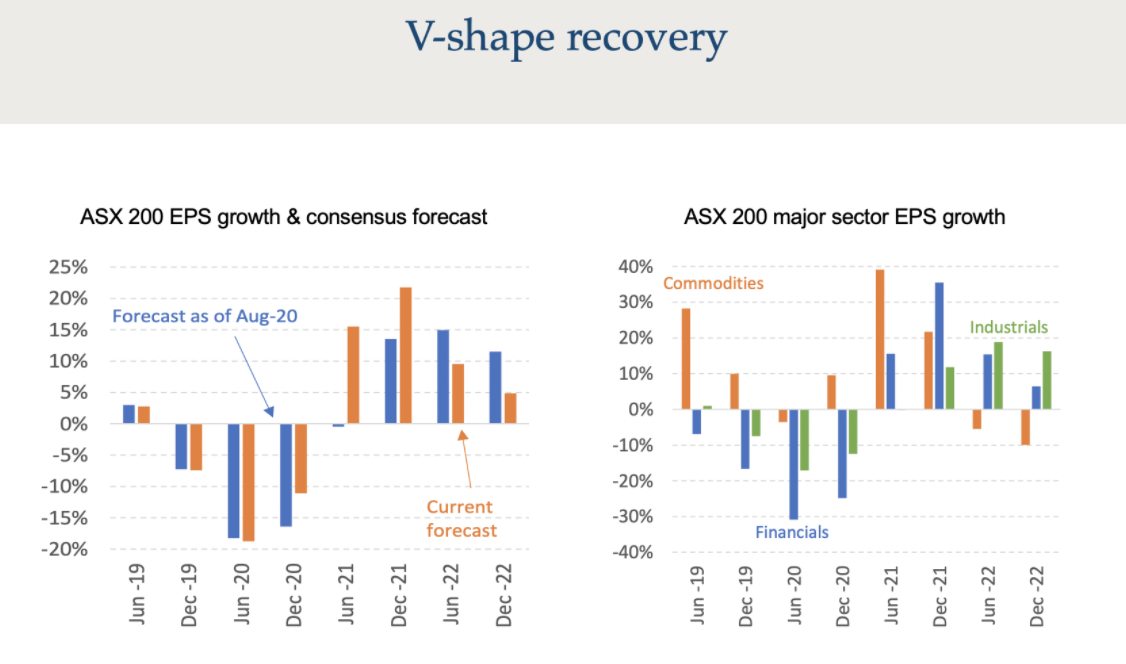
Q: You were out of the banks for several years but have been adding exposure more recently: What’s behind this and what are your preferred exposures?
What we've seen so far is that the biggest upgrades have been in financials, in the banking sector. Those results and that recovery has lent us to move back into the banking sector, remembering that as investors, we weren't holding the major banks from 2015 to 2018. We first went back into Commonwealth Bank (ASX:CBA), and then during the pandemic, we made a sizable investment into Westpac (ASX:WBC).
What we're starting to see is an uptick in both volume growth, incredibly strong capital positions from the banking sector, and importantly a remarkable recovery in dividend yields. We think that the banks now are priced on 4.5 -5.0% fully franked dividends, on much more sustainable payout ratios of 60-70% and in a much better capital position.
What we felt in that period from 2015 to 2018 was that the banking sector was over earning. We do a lot of work both domestically and globally, and we could see that the returns the Australian banks were getting, in terms of return on equity, their profit margins, and also their dividend payout ratios were just too high. And what we've seen is that we've seen a re-basing of the dividends.
We are also starting to see some upgrades in the industrial sector, and we're also seeing significant upgrades in the commodity sector, and that's primarily driven from the largest position in that area, BHP, driven by much stronger iron ore prices and much stronger copper prices. A subdued CAPEX environment is leading that to be paid back into distributions to shareholders.
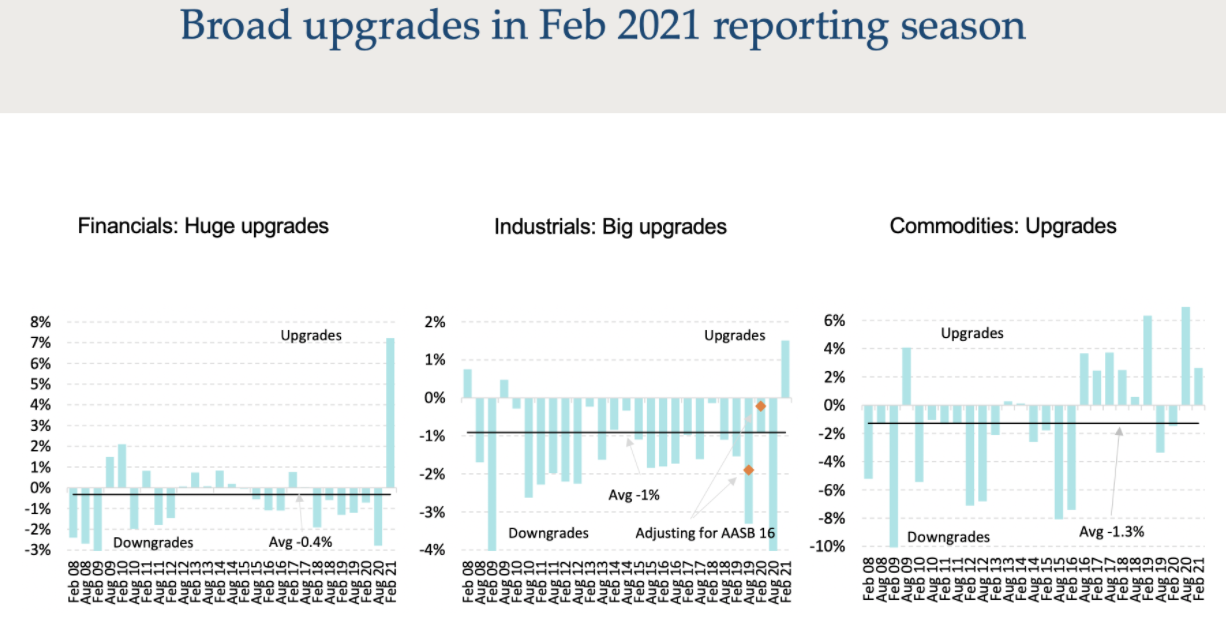
Q: What’s your view on the rotation from growth to value stocks?
For some time now, growth assets have had a remarkable performance at the expense of value stocks. We do firmly believe we're at an inflection point at this point of the cycle, where we are seeing much better valuations for that part of the sector and a much bigger earnings uplift in both cyclical and value stocks.
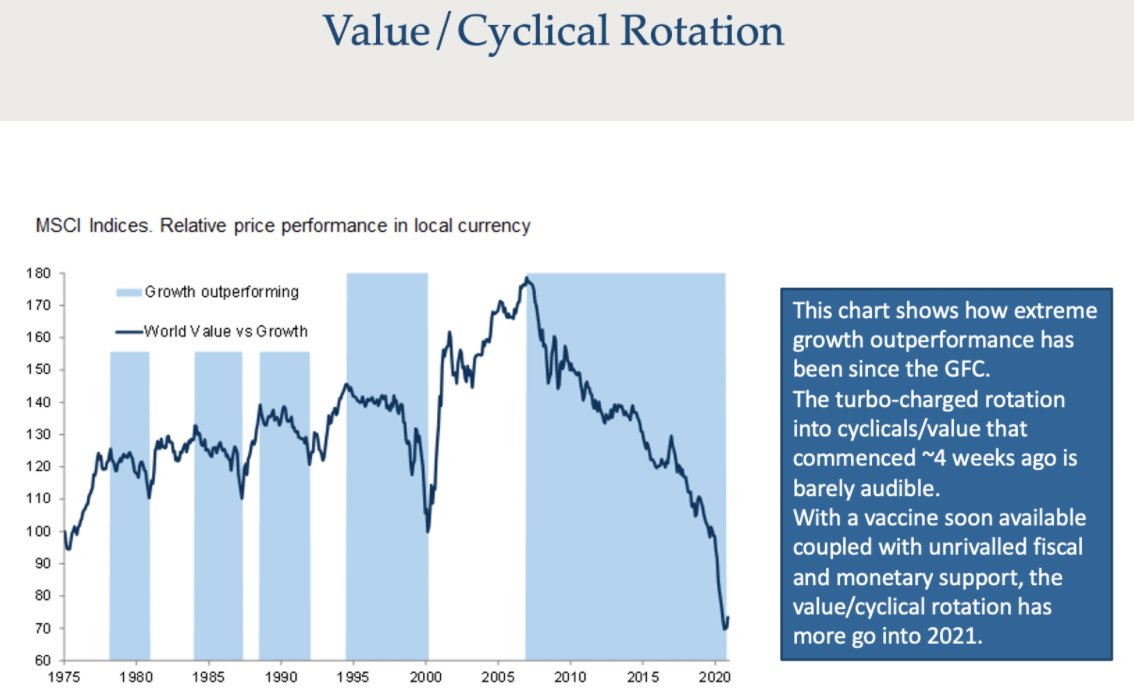
One of the things that we're looking at here is just the dispersion of what the high P/E stocks are compared to the low P/E stocks. The spread there is around 21 P/E points, which we think is unprecedented.
Over time, we do expect to see a better performance from value and cyclical stocks, and hence we've tilted the portfolios more towards that end of the market, and away from growth assets at this point in time.
Q: Blackmore has been invested in CSL for a number of years; what was your take on their result?
CSL was the most intriguing result in the reporting season. It delivered a result that was about 20% above forecast, but they were very, very cautious on their forward outlook, maintaining guidance of 3-8% net profit growth.
We do think that they will ultimately upgrade that guidance, but I thought it'd be interesting to just talk through some of the drivers in CSL, given that it's been a doyen of Australian investors' portfolios for a number of years. And the business is really in two parts.
The largest component is plasma therapies, and that has got long term growth prospects of around 8-10%. The pipeline is very strong, but what's happened in COVID is it's the supply of plasma through collection centres, the largest market being the United States, has been constrained, and that has put pressure on that business, but there's a number of offsets that they're using to support that market. One is that they've got excess inventory. Two, the regulator has allowed a holding period to be reduced, and three, they're also seeing quite significant price rises in that market.
We expect that that market will remain challenged for the next few months, but as the vaccine is further rolled out, particularly in those Northern Hemisphere countries, in particular the US, we will start to see people coming back to collection centers, donating plasma, and helping with supply there. The second part of their business, which has been a huge beneficiary of the pandemic, has been their vaccine business. There has been unprecedented for flu vaccinations, not only in Australia but also in the Northern Hemisphere, in the winter that they've just come through.
But also our channel checks of CSL is that the future demand for the next flu season in the Northern Hemisphere has been unprecedented again. So, we'll start to see both a further uplift in volumes for their flu business, and also the mix of their product range will also see a range of price increases there. So, we remain very constructive of CSL in the portfolio. We've recently added to our position there as the prices have been weaker, and we think it remains a core portfolio stock.
Q: Healthcare is an area you have some expertise in; where else are you seeing opportunities in the sector?
Healius (HLS) is the second largest provider of pathology services in Australia. It has been a COVID beneficiary of the COVID tests, and they continue to see very elevated numbers there. We've had to be patient with this company. It has been a turnaround. They've de-geared the balance sheet by selling the medical GP products, where they got over $400 million there. So, the balance sheet is in absolutely pristine condition. 90% of the business is in pathology. They're the third-largest imaging, diagnostic company in Australia, and they've recently and successfully moved into day hospitals as well, where they're seeing very, very good growth there.
In the Healthcare space, where multiples are generally high, this is a value play in the healthcare sector and we think that they can grow their earnings between 5-10% over the forecast period. The valuation remains undemanding. They are showing clear signs of recovery in their underlying businesses, and we do expect margin improvement in that business, as well. It is a big overweight in the portfolio, and for the moment we're very comfortable to have that big overweight there.
Thanks, Marcus.
You're welcome, Anthony.
--------------------------------------------------------------------------------------------
A different type of wealth management
Lucerne Investment Partners seeks to create long-term outperformance for high net worth investors by finding high-quality managers exposed to emerging themes and partnering early. We have a strong track record of being the first institutional investor in highly successful funds. Please click LIKE if you found this piece useful, FOLLOW if you'd like to get the next wire direct to your inbox, or 'CONTACT' to line up a call with us to find out more.
--------------------------------------------------------------------------------------------
1 topic
5 stocks mentioned
1 contributor mentioned

